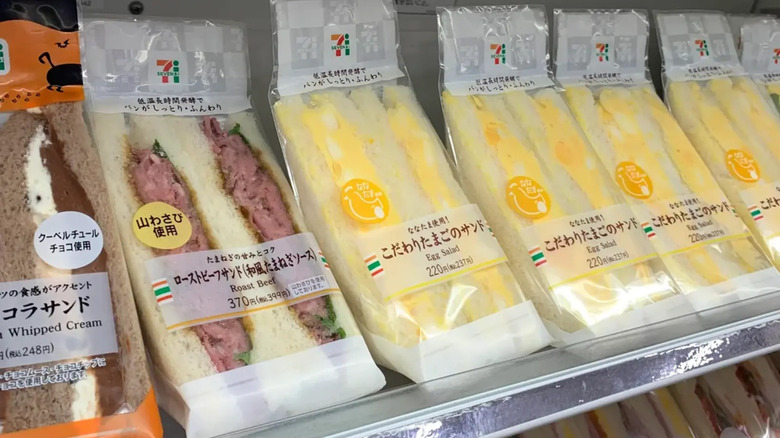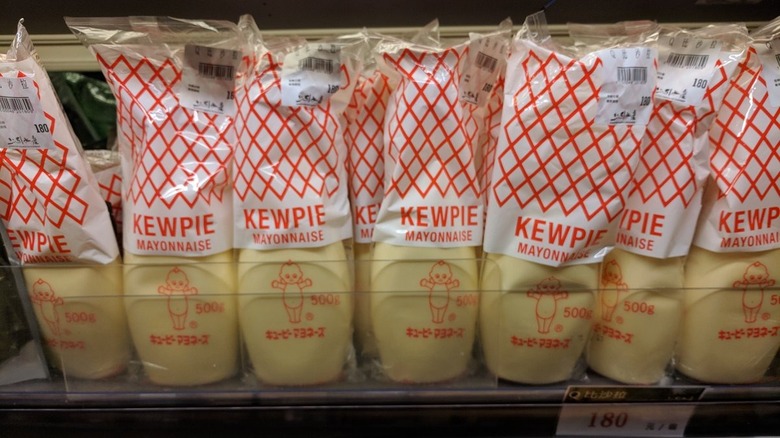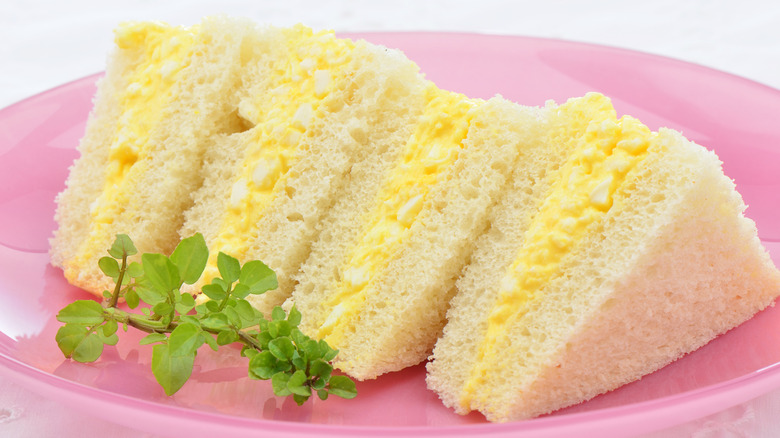The Secret To Japan's 7-Eleven Egg Salad Sandwiches
Americans think they know 7-Eleven, but the stores in the U.S. are just the tip of the iceberg. Sure, the convenience store chain got its start in the States., but today, there is a gobsmacking number of 7-Eleven locations around the world, numbering in the tens of thousands. The U.S. can't even claim to have the most 7-Eleven locations. That title belongs to Japan, which has over 20,000 locations, and they take the convenience store experience to unbelievable new heights.
7-Eleven stores in Japan offer a far greater variety than their American counterparts, with ATMs, fax machines, office supplies, and house-brand toiletries and clothing. What'll probably surprise you even more is the fact that, in Japan, 7-Eleven is a legitimate dining destination. They go way beyond the standard hot dogs and pizza you can find at American locations, offering a wide array of bento boxes, desserts, sandwiches, and even fresh baked goods.
You'll find classic Japanese foods like onigiri and karaage, but many customers contend that the best dish in the whole store is an egg salad sandwich. It sounds remarkably basic at first, but the egg salad at Japan's 7-Eleven stores is packed with a secret ingredient that takes it over the edge: Kewpie mayonnaise. It's a unique Japanese brand that's quickly spreading around the world, and chefs are obsessed with it.
The secrets of Kewpie mayo
Kewpie mayonnaise was the first mass-produced mayonnaise made in Japan, basically introducing the country to the condiment. The company was started in 1925 by Toichiro Nakashima, a man whose particular values were instrumental in setting his product apart. He had noticed that Western culture was having a big impact on the fashion choices of Japanese students at the time, and he accurately predicted that the influence would soon extend to his country's cuisine.
Nakashima was a strong advocate of health and fitness, so he decided to create a more nutritious version of the classic Western condiment, mayonnaise. To achieve this goal, Nakashima made Kewpie mayo using only egg yolks, unlike other brands, which use the whole egg. Today, we often think of egg whites as the more health-conscious choice, but yolks contain more vitamins and minerals, and more protein by weight.
Though Nakashima was motivated by health, his choices ultimately had a bigger impact on the texture and flavor of Kewpie mayo. Using egg yolks exclusively gives the mayonnaise a custard-like consistency, and the increased fat gives it an exceptionally luscious mouthfeel. You can also taste the egg more clearly because Kewpie is made with a blend of rice vinegar, wine vinegar, and apple cider vinegar, much subtler choices than the white vinegar used by American brands.
Why Kewpie is perfect for egg salad sandwiches
People can debate all day about how much mayo you should add to egg salad, but it's tough to argue that the best type of mayo to use is anything other than Kewpie. Americans who visit Japan and experience their iconic 7-Eleven sandwiches for themselves inevitably return home to find that the egg salad they had previously enjoyed simply doesn't do it anymore. Kewpie's egg-forward taste accentuates the eggs in the salad whereas the more acidic American brands can sometimes overpower them. Plus, the extra-fatty texture gives the egg salad a creamier mouthfeel.
There's another ingredient in Kewpie that makes a huge difference: monosodium glutamate a.k.a. MSG. It's pure umami, adding an extra dimension to egg salad that other mayo brands cannot. Unfortunately, Americans have long labored under a myth about MSG being harmful (which is rooted in anti-Asian prejudice). Consequently, the Kewpie mayo sold in the United States is made with yeast extract instead, which contains some natural glutamate, but not as much as MSG. The American version also adds sugar, another departure from the original formula. So, sadly, you won't be able to perfectly replicate that Japanese egg salad in the States. Better buy a ticket to Tokyo.


